










































































October 2024 • Volume 72, No. 10
CEO Michael Shepard
SENIOR VP OF CONTENT Leon Espinoza
EDITORIAL DIRECTOR Mike Teegarden, CCC
DEPUTY EDITORIAL DIRECTOR
Noble Sprayberry
SENIOR EDITOR Jennifer Paton, CCC
ASSISTANT EDITORS Chasity Anderson, CCC; Victoria Hampton, CCC; David Herder, CCC
ASSOCIATE EDITORS
Valeri Pearon, Nina Todea
PUBLICATIONS PRODUCTION SR. MANAGER
Elizabeth Beatty
SENIOR PUBLICATIONS COORDINATOR
Alyssa McDougle
Ruralite (USPS 397-460) is published monthly for members for $5.43 per year, plus postage, by Pioneer Utility Resources Inc., 5625 NE Elam Young Pkwy. Ste. 100, Hillsboro, OR 97124—a not-for-profit Oregon cooperative corporation—to serve the communication needs of 46 consumer-owned electric utilities in Oregon, Washington, Alaska, Idaho, Nevada and California. Preferred periodical postage paid at Hillsboro, Oregon, 97123 and additional mailing offices. © 2024 Pioneer Utility Resources. All rights reserved. Reproduction in whole or in part without written permission is prohibited.
Postmaster: Send address changes to Ruralite, 5625 NE Elam Young Pkwy. Ste. 100, Hillsboro, OR 97124-6454
HOW TO CONTACT RURALITE
Subscription services:
Nonmember subscriptions $15 (U.S.) per year; $25 per year (foreign). Prepayment required. Allow 4-8 weeks for first issue. Be sure to identify which local edition you want to receive.
Address Changes:
Utility members, contact your local utility. Subscribers, call us at 503-357-2105 option 3 or email mailingdept@pioneer.coop.
Back issues:
Back issues and extra copies $3. Prepayment required. Supply is limited. Be sure to identify edition, month and year. Call first if ordering back issues to check availability.
To contact Ruralite: Ruralite magazine is published by Pioneer Utility Resources.
P.O. Box 1306, North Plains, OR 97133-1306; 503-357-2105; email: info@pioneer.coop. For more information, visit www.pioneer.coop.
DISPLAY ADVERTISING INQUIRIES
American MainStreet Publications
611 S. Congress Ave., Ste. 504 Austin, TX 78704
800-626-1181 or 512-441-5200
When I began working here at Ruralite magazine, I had no idea what a wonderful world I had fallen into. But it didn’t take me long to figure out that working in the public power/co-op utility world was a fabulous opportunity.
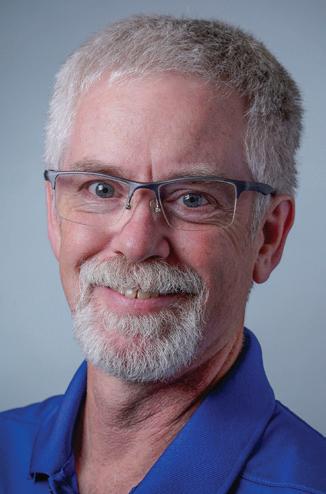
The people I have met and work to serve—those same people who bring power to your homes—are earnest, hardworking individuals who care deeply about the safety and success of their communities.
This month, through National Cooperative Month and National Public Power Week from Oct. 6-12, we celebrate these entities and their teams who brighten your day with electricity.
Pioneer Utility Resources, the company that publishes this magazine for your utility, is such a fan of the cooperative business model that we are a cooperative ourselves.
If you happen to visit your utility office this month, please take a moment to appreciate
the value it brings to your life. Affordable and reliable electricity is a foundational service that affects every corner of our days.
Our Spotlight feature this month highlights the Gorge Farmer Collective in the Columbia Gorge that sprung up after COVID-19 hampered growers in Washington and Oregon accustomed to selling directly to buyers at farmers markets and restaurants.
The savvy farmers formed a cooperative to leverage their sales opportunities and developed an online store allowing buyers to place orders and pick them up outdoors. The group has continued to evolve as COVID-19 has receded.
Our Up Close feature this month will challenge you with presidential trivia, just in time for our upcoming elections next month. Impress your friends with obscure knowledge about the highest office in the United States. And, of course, please make sure you vote.
Sincerely,
Mike Teegarden Editorial Director

For supplemental and interactive content, search @Ruralite on your favorite social media sites.

How much do you know about past presidents? Up Close, Page 10

By Courtney Cobb
Walking the hallowed grounds of Mount Vernon and exploring famous memorials around Washington, D.C., can leave a lasting impression on a visitor. This year’s Central Electric Cooperative Washington, D.C., Youth Tour delegate Atticus Lau is no different.
Atticus, a senior at Realms High School in Bend, describes this trip of a lifetime as a memorable experience, allowing him to learn more about our nation’s history in person and through the eyes of his peers.
“I think going through the entire trip with everyone else in my (Oregon and California) group made it much more interesting than any personal or family trip,” he says. “It really made it the Youth Tour.”
Fifteen students from cooperatives throughout Oregon and California comprised his tour group. Atticus says he enjoyed exploring the city with his fellow delegates, learning more about the students and discovering different facets of our nation’s history.
With tours around famous landmarks such as Arlington National Cemetery, Capitol Hill, the Holocaust Museum and the Smithsonian, Atticus says one of his favorite destinations was a museum that paid homage to one of our military branches.
“For me, the most interesting destination had to be the Marines Museum,” he says. “Specifically, because they had so many cool things there, and they documented lots of technological advancements.”
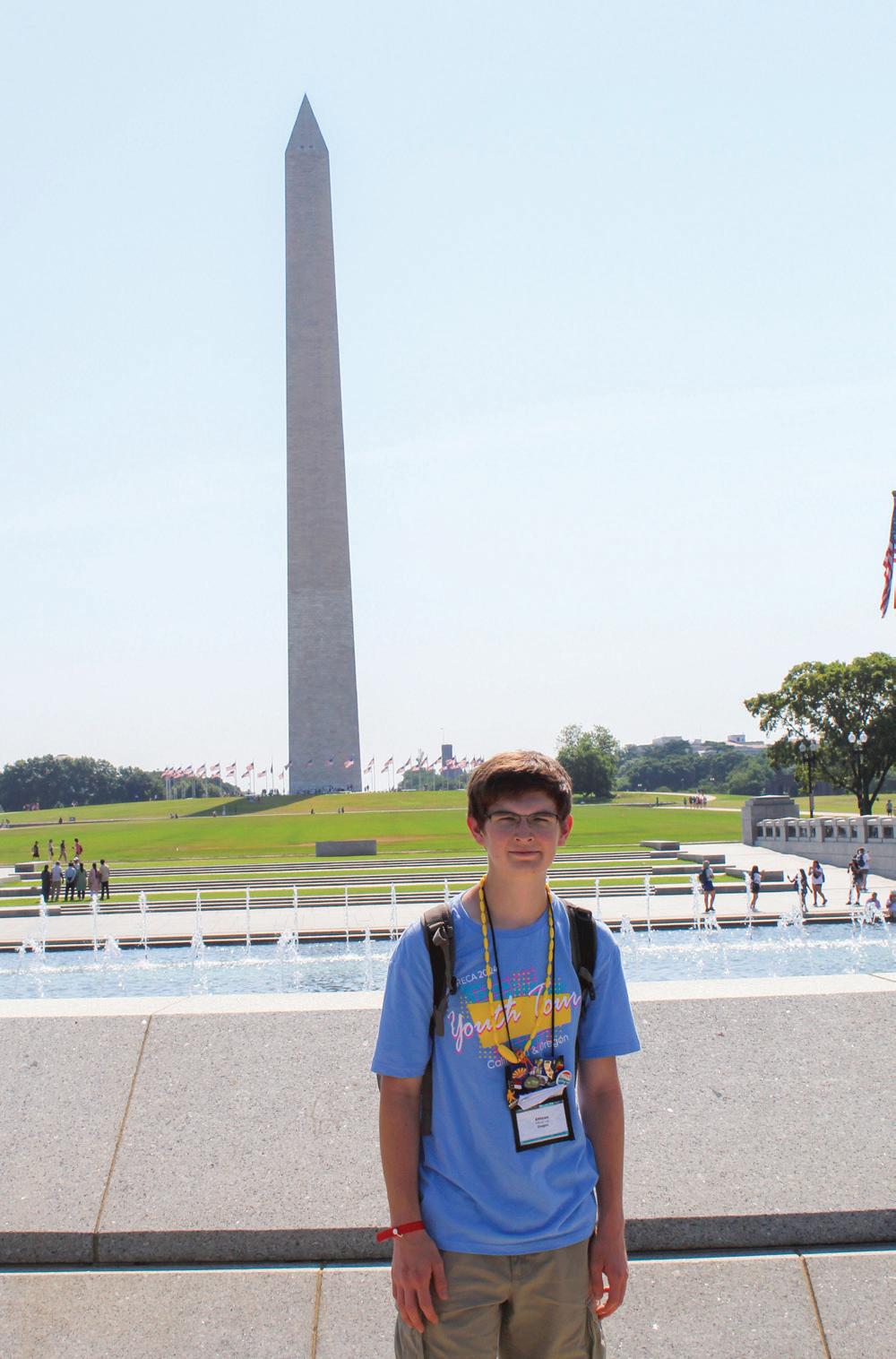
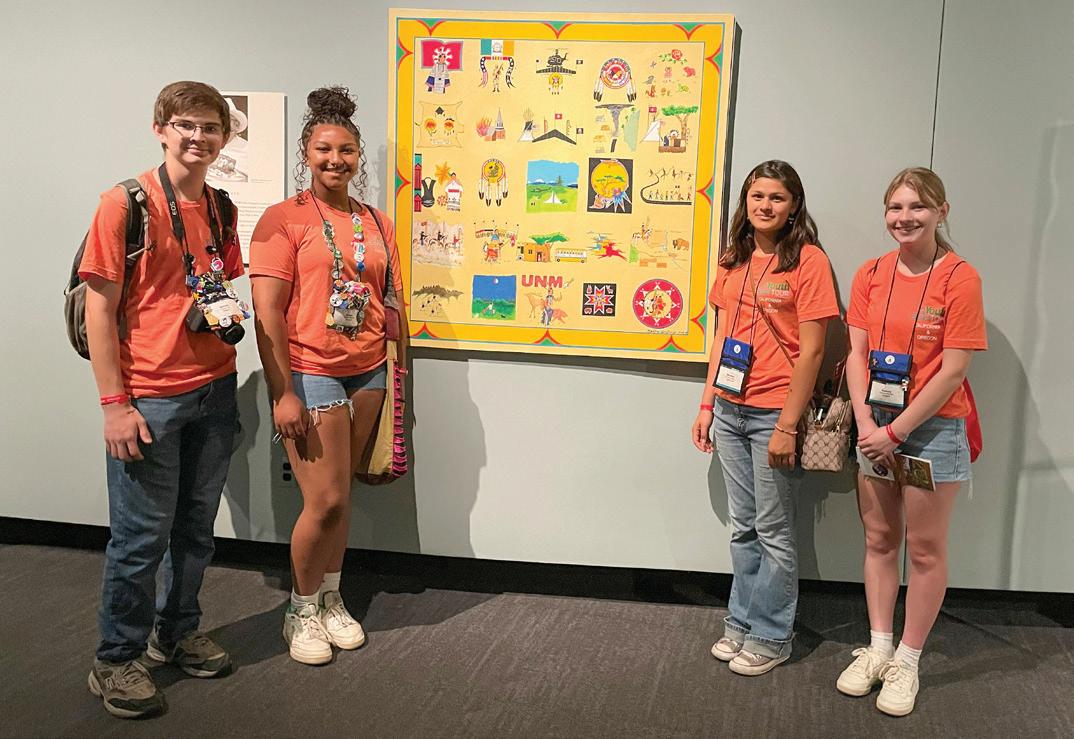
LEFT: Oregon Youth Tour delegates visit the Smithsonian’s National Museum of the American Indian. PHOTO BY ERIKA SJODENYOUNGSTROM
BOTTOM LEFT: Atticus poses for the quintessential Washington, D.C., photo in front of the Washington Monument. PHOTO COURTESY OF ATTICUS LAU

A new sense of gratitude started to bloom throughout the long days of visiting monuments, museums and memorials.
“I definitely appreciate our nation’s history more because there has been a lot of sacrifice by a lot of people, and I especially appreciate this because lots of the rights and privileges I enjoy—along with countless others—are owed to them,” Atticus says.
A tour of Arlington National Cemetery gave Atticus a moment to pause and reflect on the sacrifices countless men and women made.
“Everywhere we went, there were white grave makers as far as the eye could see, aside from the trees,” he says. “In one of my photos with the grave makers, if you look in the very back it looks like the ground itself is white, which really puts everything into scale.”
Another impressionable experience was the day the students toured Capitol Hill and met with Oregon’s representatives’ staff; visited the Library of Congress, where the students got an official library card; and toured the Capitol.
“For my favorite moment, I am picking the Capitol Hill tour because we got to go inside, see how everything works and hang out there,” Atticus says.
Many past Youth Tour delegates describe the weeklong trip as a life-changing experience. It was no different for Atticus, who, upon reflection, shares that his involvement in the entire process helped him grow professionally and gave him a deeper appreciation for his country.
“From the very start of the application process to the interview, the trip and the presentation I made to the board of directors, this might have been the most professional thing I have done so far in my life,” he says. “(This) has already made an impact from the start and furthermore, applying for and winning a free D.C. trip unexpectedly, going on it and seeing a bunch of stuff with a bunch of people my age will be something I will always remember.”
Atticus says he would recommend this trip to any high school junior.
“If you are considering applying, why not?” he says. “Aside from some time to prepare for the application, essay and interview, it is an all-expensepaid trip, and you get to see so many things in Washington, D.C., and meet a bunch of great people.
“On top of that, writing the essay, going through the interview process and giving presentations has all helped me grow as a person.” n

PHOTO BY ATTICUS LAU
The Washington, D.C., Youth Tour program is supported by cooperatives throughout the United States. Each year, during one week in June, thousands of teenagers descend on the nation’s capital to learn more about our country’s history and the unique role cooperatives play in their communities.
Central Electric Cooperative’s 2024 Youth Tour delegate, Atticus Lau, says before the trip, he didn’t know much about electric cooperatives except that they supplied electricity. He says he now understands cooperatives are so much more.
Cooperatives provide jobs within their communities and bring electricity to rural areas not served by for-profit companies. Customers are members of the not-for-profit businesses, and cooperatives care about the communities around them.
“I learned electric co-ops choose to give back to the community through sponsorship opportunities like the Youth Tour,” Atticus says.
Applications for the 2025 Washington, D.C., Youth Tour are now open. A copy of the application is on Page 8. You can also find more information on the program at www.cec.coop/community/youth-tour.
Mutual aid programs are how utilities help each other quickly respond to disasters
By Jennah Denney
Electric utilities employ a variety of methods to reduce the likelihood of power outages, from regular tree trimming to equipment maintenance and repairs to local grid updates. But outages occur, and when they do, public power utilities are ready to respond.
Another way electric utilitiess prepare for major outages and disasters is through mutual aid, which is a collaborative approach to emergency planning. The mutual aid model allows utilities to help each other during times of need. This approach lets utilities “borrow” restoration workers from other utilities, thereby increasing the workforce response to areas affected by a major outage. It’s essentially about neighbors helping neighbors, even when those neighbors are fellow utilities thousands of miles away.
Public power utilities were formed to provide reliable electric service to their members at the lowest reasonable cost, and mutual aid has always been a fundamental part of their DNA. The concept of mutual aid originated with rural electrification efforts in the 1930s. From the beginning, public power utilities relied on each other to provide an essential safety net in times of crisis.
Mutual aid ultimately benefits utilities’ consumers. During major outage events, utilities can increase their workforces and respond more quickly, leading to shorter outage times for consumers.
Disaster response and mutual aid are managed by public power utilities, as well as their statewide organizations. The statewide organizations help coordinate among states, helping ensure there is adequate personnel and equipment, which are the key ingredients of the mutual aid recipe. These efforts require effective logistics management and experts who
fully understand resource allocation and have the expertise to respond under pressure.
During major outages, a variety of equipment is necessary to complete repairs, including bucket trucks and other specialized vehicles, utility poles, transformers and wires. Skilled lineworkers, tree trimmers, damage assessors and other key personnel are often shared among utilities. These experts provide critical skills and a workforce to speed up the restoration process.
Because the national network of transmission and distribution infrastructure owned by public power utilities has been built to federal standards, line crews from any public power utility in the United States can arrive on the scene ready to provide emergency support, secure in their knowledge of the system’s engineering.
Mutual aid embodies the spirit of cooperation and resilience that public power utilities have fostered since their inception, even in the most challenging crises. The goal is to restore power as quickly and safely as possible after a major outage event. As utilities continue to adapt and grow, this collaborative approach ensures communities remain connected and supported. n


MIDDLE:
OPPOSITE
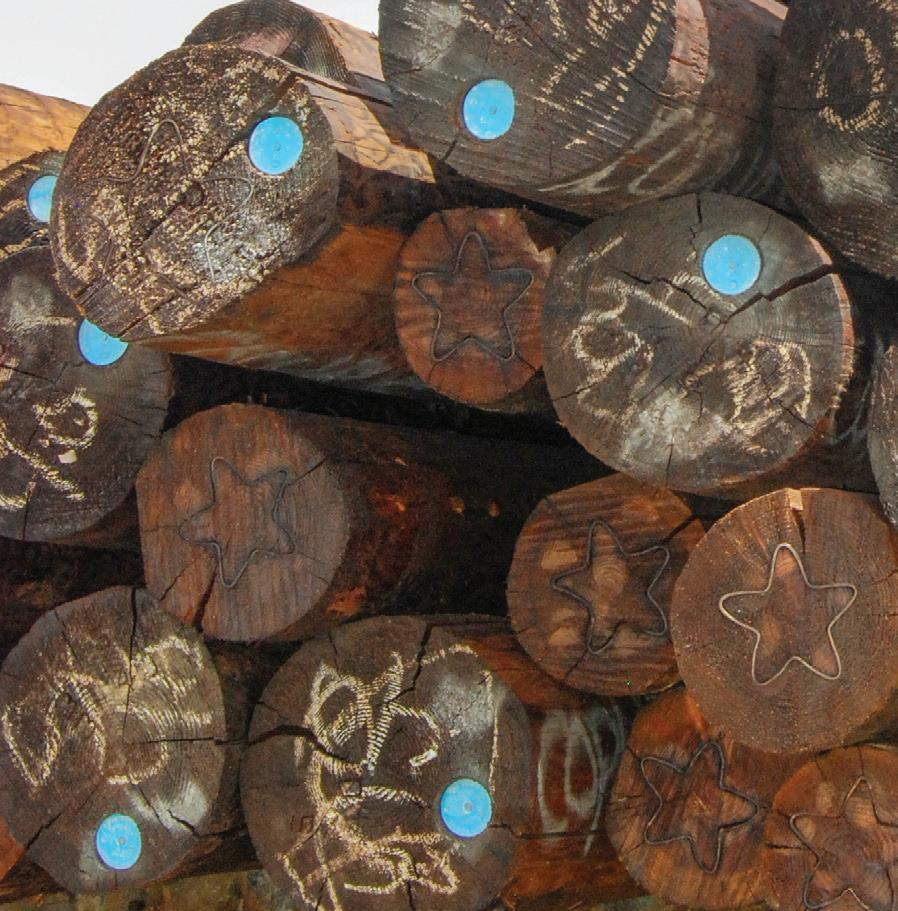
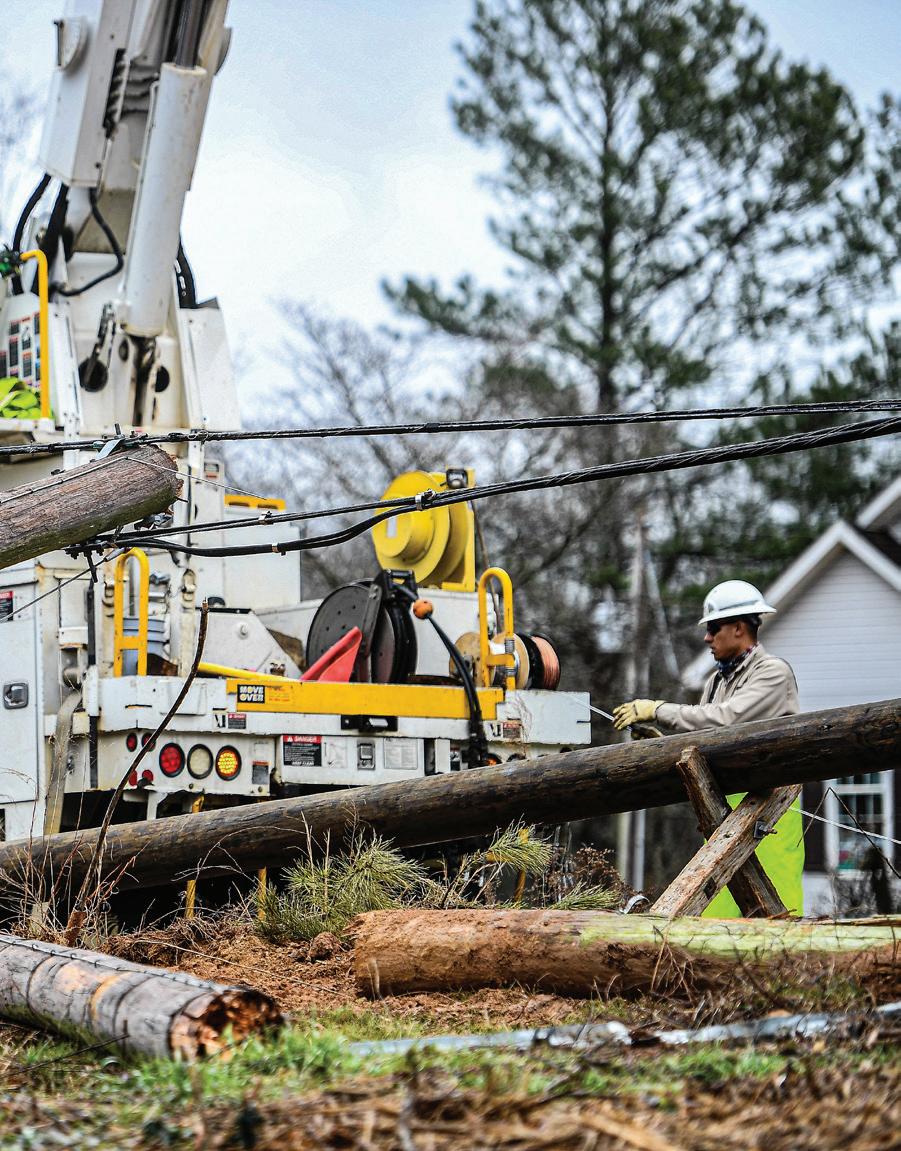
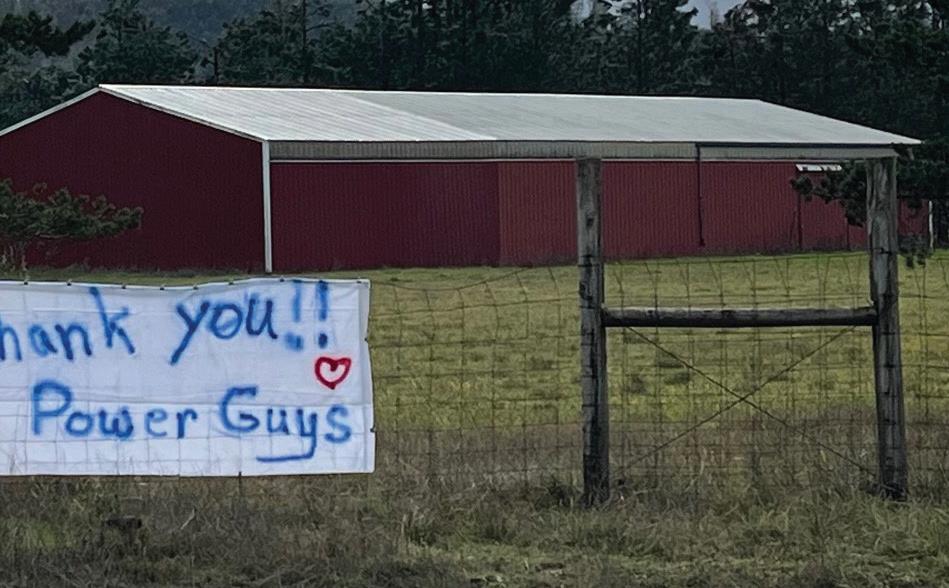


Name Address
City __________________________________ State _________________ ZIP code
Phone number
Email address
Central Electric Cooperative account number
Parents’ or legal guardians’ names

Name of high school
I certify this information is true to the best of my knowledge:
Your signature
I understand my child is competing to win an all-expenses-paid trip to Washington, D.C., sponsored by Central Electric Cooperative Inc. I further acknowledge I am a CEC member. The above-named applicant is my dependent, and they live in my home. If they are selected to be a CEC Youth Tour recipient, I grant unrestricted permission for my dependent’s name and image to be used in print, video and digital media. I agree CEC may use these images for a variety of purposes, and they may be used without further notification.
Parent or guardian signature (if younger than 18 years old)
Please attach/submit the following information typed or legibly written with your application:
• Describe your goals, hobbies, activities, awards or other achievements.
• Complete the following essay topic: “What is the greatest issue facing your community, and how can you be a part of the solution?” The essay should be a minimum of 500 words. Essays are judged on content, grammar, originality and creativity.
• Tell us what you know about electric cooperatives.
Mail or drop off the completed application by Friday, Jan. 3, 2025, to:
Central Electric Co-op Attn: Washington Youth Tour 2098 N. 6th St. P.O. Box 846 Redmond, OR 97756-0187

By Sydney Turner
Presidential elections can cause passionate emotions, but one thing we can all agree on is the office of the president of the United States has a long and interesting history. We last ran presidential trivia in 2008, but a reader recently suggested we do it again. We dug up some of our favorite trivia questions to test your knowledge. Information sources are included, too, in case you want to dig deeper.
Q: During which presidency did Queen Victoria of Great Britain and Ireland give the Resolute Desk to the United States?
A. Rutherford B. Hayes
B. Chester A. Arthur
C. Ulysses S. Grant
D. Benjamin Harrison
A: A., Rutherford B. Hayes. The HMS Resolute was sent to the Arctic in 1852 as a rescue ship in search of missing explorer Sir John Franklin. When it too became iced in, her crew eventually abandoned her in 1854, and she drifted as a ghost ship. In 1855, the Resolute was discovered by the New London, Connecticut, crew of the George Henry, made seaworthy and sailed to New London Harbor, arriving Dec. 24, 1855.
The Resolute was soon returned to England and served the Royal Navy for 23 more years until she was decommissioned. It was then that Queen Victoria ordered that a desk be made of the Resolute’s best timbers and sent to the United States as a symbol and seal of the two countries’ lasting friendship.
The desk was first used by President Hayes and was first used in the Oval Office by President John F. Kennedy. The desk has been moved in and out of the Oval Office throughout history, but has been used by every president since Jimmy Carter. https://tinyurl.com/y4mfjyc3
Q: Presidents have had many jobs. Which of the following has been held by presidents either before or after office?
A. Supreme Court justice
B. Farmer
C. Haberdasher
D. All the above
A: D. Earlier in his life, President Harry Truman was indeed a haberdasher in Kansas City, Missouri. Jimmy Carter is well known as a peanut farmer from Georgia, though many of our founding fathers held the title of gentleman farmer in addition to president. In perhaps the most unprecedented postpresidential move, William Howard Taft became chief justice of the United States after his presidency. Much preferring law to politics, Supreme Court justice was the job he wanted all along.
https://tinyurl.com/yj7em57p
Q: Which president was also a U.S. National Park Service ranger?
A: Gerald R. Ford. In the summer of 1936, Ford worked as a seasonal park ranger at Yellowstone National Park. Ford later recalled that time as “one of the greatest summers of my life.”
https://tinyurl.com/5ewn2yb6
Q: Which presidential family member can be closely connected to three presidential assassinations?
A: Robert Todd Lincoln. He was in the Petersen house when his father, Abraham Lincoln, died April 14, 1865, the day after being shot by John Wilkes Booth. In 1881, Lincoln was only a few feet away from President James A. Garfield at the train station in Washington, D.C., when Garfield received the shot that took his life. Lincoln found himself in Buffalo, New York, in 1901 when President William McKinley was shot at the Pan-American Exposition and later died.
https://tinyurl.com/5n7ka5xu
Q: Which former president was issued the first Medicare card?
A: Harry Truman. President Truman had fought passionately to establish Medicare and Medicaid while in office but was ultimately unsuccessful. Later, when President Lyndon B. Johnson signed Medicare into law in 1965, he traveled to Independence, Missouri, to sign the bill and present former President and First Lady Truman with the first Medicare cards.
https://tinyurl.com/yeyph99x


Q: The presidential family’s household expenses, such as groceries, toiletries and dry cleaning, are paid for by the government. True or false?
A: False. The next time the media reports the president had sushi brought into the White House, you can rest easy. Those are not your tax dollars at work.
https://tinyurl.com/235p6639
Q: How many presidents were unmarried when they took the oath of office?
A. 5
B. 3
C. 6
D. 4
A: C. Presidents Thomas Jefferson and Martin Van Buren were widowers when they took the oath of office. Andrew Jackson was married when he was elected but widowed by the time he was sworn in. Chester A. Arthur was a widower as vice president and remained so when he inherited the presidency after the death of President James Garfield. President Grover Cleveland was a bachelor when he took the oath of office for his first presidency but married during his first term in office. The American presidency has only seen one true bachelor, President James Buchanan. He never married, so his niece, Harriet Lane, served as his first lady.
https://tinyurl.com/2whjzdnz
Q: How many years is “four score and seven?”

A: 87 years. The iconic line “Four score and seven years ago,” from President Lincoln’s Gettysburg Address, refers to 1776. https://tinyurl.com/yc3hsv4v
Q: Under which president was the west wing constructed?
A: Theodore Roosevelt. Among other reasons, the White House—as it existed in 1901 when the Roosevelt family moved in—was not suited to hold both his rambunctious family of six children and the business of the nation. So, construction of the west wing began.
https://tinyurl.com/yu92ka49
Q: During which presidency did the term first lady become synonymous with the president’s spouse or attending female relative?
A: Grover Cleveland. Though varying terms to describe the president’s spouse have been used throughout history— including Mrs. President—it was during Grover Cleveland’s second term as president that his wife, Frances Folsom Cleveland, inspired the term we use today. https://tinyurl.com/597pmcsu
Q: How many presidents also served in Congress?
A: 26. Ten former presidents served in both the House of Representatives and the Senate, nine served in the House, and seven served in the Senate. One president, John Quincy Adams, served in Congress after his presidency.
https://tinyurl.com/23fb7vrz
Q: Which item in this list is a fact about George Washington?
A. He had wooden teeth.
B. He did not grow hemp at Mount Vernon.
C. He chopped down a cherry tree.
D. He had no natural children.
A: D. All the children George Washington helped raise were from his wife, Martha’s, first marriage and other family members.
https://tinyurl.com/yeynk339
Q: Who was the last president born as a British subject?
A. William Henry Harrison
B. Millard Fillmore
C. Martin Van Buren
D. Zachary Taylor
A: A. William Henry Harrison, the ninth president of the United States, was the last president born under British rule and, unrelatedly, the first to die in office—after only one month’s service.
https://tinyurl.com/3wwtar66
Q: What were the country’s first two political parties?
A. Whigs and Democratic-Republicans
B. Democratic-Republicans and Federalists
C. National Republicans and Democrats
D. Democrats and Republicans
A: B. Is this question causing anyone else to start humming tunes from “Hamilton,” or is that just us?
https://tinyurl.com/sweuyfdy n





By Lori Russell
Farmers are no strangers to challenges. In the Columbia River Gorge, which serves as the border between Oregon and Washington, adapting to changes in weather, soil, pests and diseases comes with the territory. But when the COVID-19 pandemic shut down restaurants and farmers markets in the region, local growers weren’t adapting to conditions or pests. They had to figure out how to get their products to the public.
Five local growers responded quickly, joining forces to sell their crops—together.
“All of our accounts shut down overnight, and people had already started seeding,” says Kiara Kashuba, executive director, co-founder and member of the Gorge Farmer Collective.
Within two months, the group created an online, direct-toconsumer marketplace where Gorge residents could place orders and pick them up outdoors.
“It served the needs of farmers to sell their stuff and for the customers to be able to access local, healthy food in a safe way,” Kiara says.
Since planting its humble roots, the GFC has continued to grow and thrive. It now has more than two dozen members and sells items for a range of local producers. Customers—ranging from individuals and families to caterers and restaurants—can check out the weekly list of seasonal produce, meat, eggs, mushrooms, bakery items, honey and other products on the website and place any size order from a bag of apples to multiple pallets of food.


2021. Member-owners have an equal share of the business and participate in decision-making, including setting the annual budget and electing directors to the board. In years of excess profit, dividends are returned to the members.
Kiara says the cooperative model encourages producers to lean into their market niches.
“There are so many microclimates in the Gorge,” Kiara says. “At a traditional farmers market stall, you can’t just sell greens or peppers. You need variety. But, it is a lot of work to take care of many different types of plants. In the cooperative, everyone grows what they’re good at. They work together, and it boosts everyone up.”
Before joining the GFC two and a half years ago, Paul Hansen of Total Eclipse Farm outside of Parkdale, Oregon, sold his summer fruit and vegetables directly to restaurants and farmers markets.
“Restaurants need what they need when they need it, and I have what I have when I have it,” Paul says. “Often, those two would not match up. With the co-op, I walk out in my field and predict what I’ll have available next week. If I have a lot of carrots, lettuce and strawberries coming in, I list that on the website on Wednesday.”
On Thursday, customers begin shopping, and Paul gets a list of what they have purchased the following Monday. He harvests and delivers his orders to a central warehouse Wednesday morning for delivery.

Initially established as a multimember limited liability company, the Gorge Farmer Collective became a domestic cooperative in
“At a farmers market, you’ve harvested all that produce, and because you’ve harvested it all, if you don’t sell it all, you give it to a food bank right then or compost it,” he says. “With the GFC, I can harvest 26 heads of lettuce and deliver it in a clean, efficient way with no waste. It’s a really cool system.”













Small farmers aren’t in competition with one another. We’re really on the same team.
—Kiara Kashuba, Gorge Farmer Collective executive director
The GFC has taken cooperation to another level, partnering with other organizations to serve a larger, more diverse group of neighbors in the region. It supplies local school districts with fresh fruits and vegetables, introducing students to a variety of produce they might not otherwise sample. The co-op participates in the Gorge Grown Food Network’s Veggie Rx. This fruit and vegetable prescription program addresses food insecurity and increases access to fresh produce. It also works with area food banks and local, regional and state programs that provide nutritious food to Gorge residents who need it.
Co-op members aren’t just business owners; they are also co-workers. Everyone works at least one shift a month—from loading the delivery vehicles at the warehouse to helping at the pickup sites where customers receive their orders.
“It’s really wonderful to see all this synergy of people working together for our shared business,” Kiara says.
Mary Kleihege of The Little Seven Seven Ranch in Lyle, Washington, enjoys staffing the pickup site in the nearby town of White Salmon. It is one of nine such sites in the Gorge and Portland area. During her shifts, she ensures customers have everything they need and that everything runs smoothly.

“People are always happy with what they get and are so appreciative,” she says. “They know we are working to get them what they want.”
Mary and her husband, John, raise grass-fed Highland cattle, long-haired, long-horned creatures bred to roam in large pastures. The animals are particularly well-suited for the Gorge environment and produce high-quality beef known for its flavor and tenderness.
“The GFC gives us access to the market for the beef and connects us directly to consumers who are looking for something different—and we say something better—than you can get in the grocery store,” John says.
Like many of the co-op’s owners, the Kleiheges are also customers.



“Everything that I can get from the co-op, we buy from them,” Mary says. “It’s the best food you can get. I don’t just know it’s local and it’s fresh; I know the producers. They care about the quality of everything and use best-growing practices.”
“These kinds of cooperatives make rural America strong,” John adds. “We are competing with the mega-corporations that are taking jobs away from rural America. We think that supporting the local community really matters, and the Gorge Farmer Collective is essential to building the community. It lets us keep our way of life and our lifestyle.” n
Farmers markets, community-supported agriculture and fruit stands provide consumers access to fresh local produce and products. Food hubs are another increasingly popular model. A food hub serves as a central gathering place where local farmers bring fresh produce and products to be sorted, stored and distributed. It connects farmers with retail, wholesale and institutional buyers like restaurants, schools, grocery stores and hospitals to increase access to seasonal, locally-grown food.
One of the biggest benefits of a food hub is its support of local farmers. By providing a centralized market, food hubs help farmers sell their goods more efficiently and at fair prices. This support encourages farmers to continue producing high-quality, sustainable food, which benefits the local economy and environment. Working collaboratively also allows farmers to access larger markets they may not be able to approach independently.
Food hubs also play an important role in supplying diverse food sources to their communities and reducing dependence on large-scale, out-ofthe-area suppliers.
Two Pacific Northwest groups are good resources for those interested in learning more about this collaborative model, says Kiara Kashuba, the Gorge Farmer Collective executive director. The Oregon Food Hub Club, a program of The Oregon Community Food System Network, is a peer learning community of projects in primarily rural areas of the state. It includes nonprofit organizations, farmers, ranchers, fishermen, small food businesses and rural economic development agencies. Find out more at ocfsn.org. The Northwest Food Hub Network—nwfoodhubnetwork.com—is comprised of farmer‐owned cooperative food hubs and partner organizations, including more than 200 farmers and local food producers. It serves markets across Montana and Washington.


“Small farmers aren’t in competition with one another,” Kiara says. “We’re really on the same team.”

Recipes by Gertrude Treadaway
BY KATIE WILCOX
Mexican Street Corn Chowder
4 tablespoons butter
1½ cups finely chopped yellow onion
½ cup seeded, stemmed and finely chopped poblano pepper
4 cloves garlic, minced
1 tablespoon chili powder, plus more for garnish
1 teaspoon dried Mexican oregano
4 cups chicken stock
3 medium Yukon gold potatoes, peeled and cut into ½-inch pieces
24 ounces frozen corn
1 cup heavy cream
2 teaspoons sugar
½ cup crumbled cotija cheese, plus more for garnish
¼ cup minced cilantro, plus more for garnish
1 tablespoon lime juice
Kosher salt and pepper, to taste
½ cup Mexican crema or sour cream, for garnish
Lime wedges, for serving
Sliced jalapenos, for serving
Melt the butter in a large pot over medium-high heat. Add the onion and poblano, and season with a pinch of salt and pepper. Cook, stirring occasionally, until the onion softens, about 7 to 8 minutes. Add the garlic, chili powder and oregano. Saute for about 1 minute, until fragrant. Add the chicken stock and potatoes. Bring to a boil, then lower the heat to maintain a simmer. Cook, stirring occasionally, until the potatoes are tender, about 15 minutes. Stir in the corn, cream and sugar. Cook for 5 minutes, until warmed through.
Transfer 1½ cups of the soup to a blender, and puree until smooth. Stir the pureed soup back into the pot of remaining soup. Add cotija cheese, cilantro and lime juice. Season with salt and pepper.
Garnish with additional cilantro, cotija, chili powder and crema. Serve with lime wedges and jalapenos.
I am a senior looking for hardback books by Janice Holt Giles. I can pay media shipping and a small amount for each. Contact me at kingsvalley42@gmail.com with any offers. Thanks to all who sent me George MacDonald books. I was so blessed.
Helen Wilder
24751 Maxfield Creek Road Monmouth, OR 97361
I would appreciate any broken jewelry, chains, beads or pearls you may no longer need.
Susan Bybee
16637 W.M. Foss Road La Pine, OR 97739
I rely on a wheelchair, and there are a lot of things I am no longer able to do, but my son comes and stays to help when he can. He and I take donations of denim pants to make quilts. We give the quilts to folks in need. I have asked readers before, and we received many responses. We have been so busy, we now have to ask again for more denim or other fabrics. Thank you.
Shirley and Matt Egbert 190 S. Crystal Drive Rupert, ID 83350
Retired couple would like to learn new languages. We are looking for Rosetta Stone in cassettes or CDs. Thank you.
Mr. and Mrs. Hendrix P.O. Box 299 Doyle, CA 96109 Chariotsofchoice@yahoo.com
I would like to get some wallpaper sample books or individual wallpaper samples for the grandchildrens’ school art project. Please do not fold them, as that will cause creases in the paper. Thank you very much in advance.
Bob Pagani P.O. Box 686 Pacific City, OR 97135
Please help us celebrate our mother’s 90th birthday in October. She loves people and making special cards and writing letters. She would be beyond thrilled if everyone sent her birthday wishes. Thank you for your consideration. Please send cards to Wylene Vinall, 2942 W. Fairway View Circle, Tucson, AZ 85742.
Georganne Bryant Nehalem, Oregon
My son-in-law’s mother turns 100 years young early this month. I would very much appreciate her hearing from you with a card. She does jigsaw puzzles. Her name is Louise Taggart, and please send cards to: 8090 Fairview Road, Tillamook, OR 97141. Thank you in advance.
Darlene Walker Tillamook, Oregon
Please help us surprise our amazing mother for her 100th birthday this month. She has always been interested in other people and would love receiving cards or letters in the mail. Thank you for your thoughtfulness. Send mail to Lorna Staveland at 24997 Sturtevant Drive, Veneta, OR 97487.
Judy Hillman Eugene, Oregon
I am looking for a recipe for pecan praline fudge. I have one, but each time I’ve used it, it failed. Can you help? Thank you in advance.
Pat Moss P.O. Box 6115 Fairbanks, AK 99706
Thank all of you who responded to my request for Crown Royal bags to replace the ones a quilter had lost. The generosity from readers was unbelievable. I feel the friendships and am reminded there are so many caring people.
Cindy Fay Troy, Montana
Send your request—with no attachments—to readerexchange@ruralite.org or mail to Reader Exchange, 5625 NE Elam Young Parkway, Suite 100, Hillsboro, OR 97124. Fill in the subject line with Reader Exchange. Acceptance, scheduling and editing are at the editor’s discretion. Single requests only, please. No duplicates.
Submissions are handled on a first-come, first-served basis and as space allows. We cannot honor every request.
Please affirm you have authorization from all appropriate parties before submitting. By submitting, you indemnify Reader Exchange, Pioneer Utility Resources Inc., its officers, directors, employees, utility clients and insurers from all legal liability incurred by the publication of information.
We no longer accept pen pal requests. You may submit a pen pal request as a Marketplace ad. Marketplace pricing applies.
When submitting a milestone request, please send it at least two months before the milestone.
Phone numbers will not be published. Email addresses will be published if part of the ad, but the request must include a postal address.
Request must include the name and address of the electric utility that provides your magazine.
Discover this spectacular 6½-carat green treasure from Mount St. Helens!
For almost a hundred years it lay dormant. Silently building strength. At 10,000 feet high, it was truly a sleeping giant. Until May 18, 1980, when the beast awoke with violent force and revealed its greatest secret. Mount St. Helens erupted, sending up a 80,000-foot column of ash and smoke. From that chaos, something beautiful emerged… our spectacular Helenite Necklace
Helenite is produced from the heated volcanic rock of Mount St. Helens and the brilliant green creation has captured the eye of jewelry designers worldwide. Today you can wear this massive 6½-carat stunner for only $149!
Helenite Earrings -a $149 valuewith purchase of Helenite Necklace

Make your emeralds jealous. Our Helenite Necklace puts the green stone center stage, with a faceted pearcut set in .925 sterling silver finished in luxurious gold. The explosive origins of the stone are echoed in the flashes of light that radiate as the piece swings gracefully from its 18” luxurious gold-finished sterling silver chain. Today the volcano sits quiet, but this unique piece of American natural history continues to erupt with gorgeous green fire.
Your satisfaction is guaranteed. Bring home the Helenite Necklace and see for yourself. If you are not completely blown away by the rare beauty of this exceptional stone, simply return the necklace within 30 days for a full refund of your purchase price.
JEWELRY SPECS:
- 6 ½ ctw Helenite in gold-finished sterling silver setting - 18” gold-finished sterling silver chain
Limited to the first 2200 orders from this ad only
Helenite Necklace (6 ½ ctw) ...................... Only $149 +S&P
Helenite Stud Earrings (1 ctw) ............................. $149 +S&P
Helenite Set $298 Call-in price only $149 +S&P
(Set includes necklace and earrings)
Call now to take advantage of this extremely limited offer. 1-800-333-2045

Promotional Code HNN158-03
Please mention this code when you call.
14091 Southcross Drive W., Dept. HNN158-03, Burnsville, Minnesota 55337 www.stauer.com

“My wife received more compliments on this stone on the first day she wore it than any other piece of jewelry I’ve ever given her.”
- J. from Orlando, FL Stauer Client
People don’t always do what their doctor says, but when seasoned veteran emergency room physician, Dr. Philip B. Howren, says every senior should have a medical alert device, you better listen up.
“Seniors are just one fall away from being put in a nursing home,” Dr. Howren said. “With a medical alert device, seniors are never alone. So it keeps them living independently in their own home. That’s why seniors and their family members are snapping up a sleek new medical alert device that comes with no monthly bills ever,” he said.
Many seniors refuse to wear old style help buttons because they make them look old. But even worse, those medical alert systems come
with monthly bills.
To solve these problems Universal Physicians, a U.S. company went to work to develop a new, modern, state-of-the-art medical alert device. It’s called “FastHelp™” and it instantly connects you to free unlimited nationwide help everywhere cell service is available with no contracts, no deposits and no monthly bills ever.
“This slick new little device is designed to look like the pagers doctors wear every day. Seniors love them because it actually makes them look important, not old,” Dr. Howren said.
FastHelp is expected to hit store shelves later this year. But special newspaper promotional giveaways are slated for seniors in select areas. ■

■ NO MONTHLY BILLS: “My wife had an old style help button that came with hefty bills every month and she was embarrassed to wear it because it made her look old,” said Frank McDonald, Canton, Ohio. “Now, we both have FastHelp™, the sleek new medical alert device that our grandkids say makes us look ‘cool’ not old,” he said. With FastHelp, seniors never have to worry about being alone and the best part is there are no monthly bills ever.
The phone lines are ringing off the hook.
That’s because for seniors born before 1956, it’s a deal too good to pass up.
Starting at precisely 8:30am this morning the Pre-Store Release begins for the sleek new medical alert device that comes with the exclusive FastHelp™ One-Touch E 911 Button that instantly connects you to unlimited nationwide help everywhere cell service is available with no contracts, no deposits and no monthly bills ever.
“It’s not like old style monitored help buttons that make you talk to a call center and only work when you’re at home and come with hefty bills every month. FastHelp comes with state-of-the-art cellular embedded technology. That means it works
(Continued on next page)

■ FLYING OUT THE DOOR: Trucks are being loaded with the new medical alert devices called FastHelp.

Today’s word is “comfort.” Show me in a photograph what comfort looks and feels like. Think about what the word means to you, and then challenge yourself to make a photograph that communicates how you see or feel. Just as many find doing word puzzles stretches the mind and keeps the brain awake, you may discover that choosing a word to photograph might be an equally valuable exercise.
Email your best image (just one, please) with caption information, including an explanation of how it affects you, to GPH@pur.coop. We may share submissions on our website and social media channels.
By Dave LaBelle
Decades ago, magazines like Popular Photography offered monthly photo challenges. Often, abstract word prompts such as “red,” “love” or “happiness” were given. I never took the challenge, but now I wish I had.
As a teacher and photography director, I learned not all students or staff shared the same ability to give shape to abstract ideas or concepts. While most were proficient when asked to photograph an event, a person or an object,
many were unable to grasp nonlinear assignments requiring interpretation. One student even angrily confessed he had to seek mental help because I had asked the class to make two interpretive photographs: one of how they saw themselves and the other of how they felt others saw them. He said he didn’t know what he felt about himself, and it stressed him so severely he sought counseling.
Years ago, in Pittsburgh, Pennsylvania, I taught a multiweek photo class for inner-city youth. In one assignment, I asked the young students to
photograph something they loved or thought was beautiful and, in contrast, something they didn’t like or would like to change.
The dozen or so students came back with pictures of pets, family members, friends, parks and trees by the water. But they also shared photos of broken windows, graffiti on walls and trashy front yards. I was so impressed with their willingness to put in pictures what they felt was ugly and distasteful.
Interpretive photography— trying to illustrate an abstract concept or a word—requires
some introspection and a desire to share how you see and feel. Sometimes, it is a matter of setting aside your literal, documentary eyes and awakening your artistic, imaginative vision. Hopefully, those who view our photographs can see what we see and feel what we feel. n

author, photographer and lecturer Dave
has captured special moments for more than half a century. For more of his writings, visit davidlabelle.com and bridgesandangels.wordpress.com.
The Journey Air Elite features the latest carbon fiber technology for the ultimate in portability and performance
Mobility issues affect over 1 in 5 Americans. These individuals, and their loved ones, know how decreased mobility can result in loss of independence, pain and falling hazards. They are often stuck at home, missing out on a variety of activities, in a vicious cycle that diminishes their quality of life. In the past, mobility devices like scooters and power chairs were too heavy and bulky to transport easily. Now, carbon fiber material invented for the aerospace program has been used to create the ultimate mobility device. It’s called the Journey Air Elite … and there’s nothing else like it on earth.
At only 26 pounds, the Journey Air Elite combines lightweight portability with world class performance. It’s simple to use joystick and powerful dual-motor drive system enables you to zip around quickly and safely. Its easy to maneuver, never tips, fits easily through doorways, and can go right up to a table or desk. Once you are done, just one pull on the seat handle folds it up. There’s a fold-down back to make it even easier to stow and store. It features flat-free tires and rear anti-tippers for added convenience and safety.
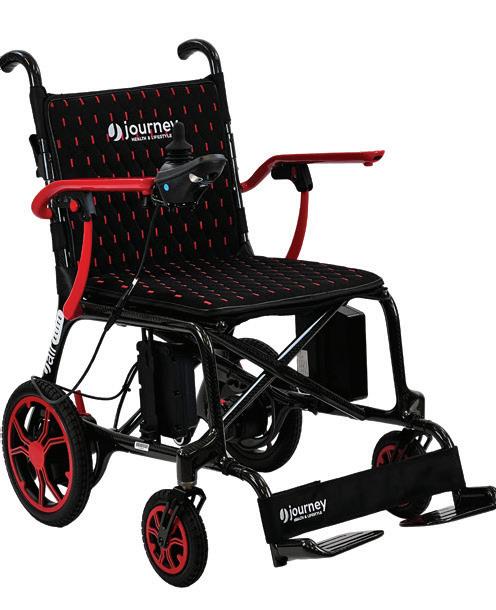
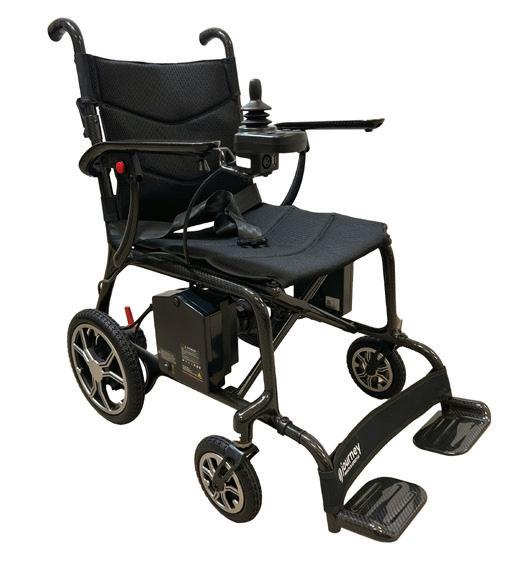

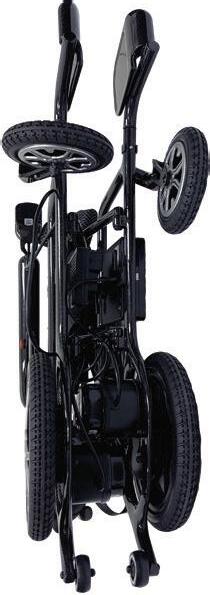
•
•
•




Just imagine how this chair can improve your life and make it easier for loved ones and caregivers to accompany you to activities and events you would have missed in the past. Don’t spend another day stuck at home. Call today, and a helpful, knowledgeable consultant will help you get a Journey Air Elite of your very own. Don’t wait – call now!












DR® Walk-Behind Leaf and Lawn Vacuum


• NEW PILOT XT Models fill paper leaf bags for curbside pickup


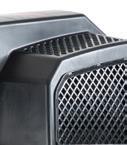




• Collects and mulches up to 50 lbs. per bag





• Includes onboard caddy for extra bags


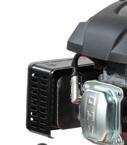
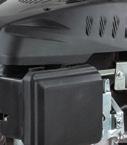





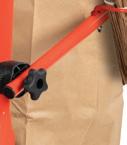









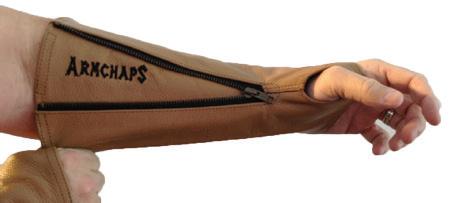











Nothing Stops a DR® Field and Brush Mower






• Cut 3" thick brush and tall field grass with ease





• Up to 2X the power of the competition


• Commercial, Electric, Walkand Tow-Behind models available, including the NEW PRO MAX60T!






















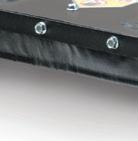
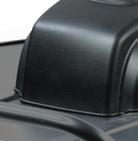


























































































Please allow two to three weeks for







Reinforced custom-sized pond liners (39 cents/sqft). Hay covers, greenhouse covers, any width and length. Truck tarps and more. High puncture and tear strength. Best price guaranteed. Celebrating 43 years in business. www.btlliners.com. 541-447-0712.
Grass hay 60-pound square bales very good quality. Cloverdale, OR. 503-812-2313 or 503-812-6539.
Buying antiques and collectibles: advertising signs, porcelain signs, gas pumps, beer signs, antique toys, cast-iron coin banks, neon signs and more. Jason, 503-310-3321 or tjabaughman@yahoo.com. 1024
WC Collectibles. We buy comic books! Local to inland Northwest. Willing to travel. WCCollectiblesCheney@gmail.com; 509-496-1835. 1024
Buying American Indian collectibles, Navajo blankets and rugs, baskets, beadwork, etc. Also, quality paintings of the early Southwest and Americas. Call 760-409-3117 or send photos to amer.ind.baskets@gmail.com. 1024
Mantle, Mays, Aaron, Koufax, etc. If interested in buying 1957-73 vintage baseball cards, let’s talk. Jim, 530-283-2826 or 530-394-8668. 1024
Griswold cast iron collection of pots, pans, trivets and cake molds for sale. For more info, 503-557-2933.
Condon, OR. In need of downtown building photos. 1800s-1940. Research project. Good prices. Interior scenes a plus. Debbie, 971-404-8332. 1024
1955 Chevy 5-window PU, 1st series 3100. Frame-off restoration by Glenn Vaughn Restorations, Post Falls, ID. Mostly all original. $38K. Text or call 206-351-2623. 1024
Books, Magazines, Videos
Book restoration. Bibles, cookbooks, cherished family heirlooms. Beautiful work. We give renewed life, more durable than original, to last for generations. 775-537-7066; salacanstudio@gmail.com. 1024AR
Business Opportunities
For sale: quaint hardware store in Maupin, OR. Inventory and interior store recently updated and refreshed. See ad on Bizbuysell.com or email Maupincountrystore@gmail.com. $239,999. 1024
Ads 25 words or fewer are $35 a month. An extended ad of up to 35 words is $50 a month. Contact information is included in the word count. Phone numbers and emails count as one word.
Longer ads may be placed. Contact 503-357-2105 or info@pioneer.coop for pricing information.
Ads are for customers of member co-ops, public utility districts and municipals only. Subscribers and nonmembers may inquire about pricing at 503-357-2105 or info@pioneer.coop.
Ads must be direct and in first person, and are subject to approval and editing.
Closing deadlines (in our office): December issue—Oct. 30, 2024.
If submitting ad by mail, send appropriate payment with your name, address, email, phone number and the name of the electric utility that provides your magazine to: Marketplace, P.O. Box 1306, North Plains, OR 97133. Make check or money order payable to Ruralite.
We accept credit card payments for ads submitted by email. Send ad to info@pioneer.coop.
Call 503-357-2105 to pay by credit card.
Advertisements are accepted in good faith. Pioneer Utility Resources is not liable for interactions between buyers and sellers.
A great business opportunity in Boardman, OR. A small cafe you can use your imagination in. Frontage view of freeway, quick in and out access. A coffee shop on property for extra income. $1.1M. For more information, call Karen at 541-571-0636. 1024
Community Events
“Racing to Change: Oregon’s Civil Rights Years,” Oregon Black pioneers in partnership with Eastern Oregon Sunrise Project. Oct. 4-26. Art Center East, La Grande, OR. 1024
RAM Columbia River Circuit Finals Rodeo, Oct. 17-19. “The Best of the Northwest.” Deschutes County Expo Center - Redmond, OR. columbiarivercircuit.com. 1024
Equipment/Tools
DR multitrimmer, $350. Kubota roto-tiller. Only 25 hours use. $1.15K. 11 push-pull control cables $40-$90 each. Fob Eugene, OR. Ted, 458-910-3727. 1024
Free Items
Free materials—church, government uniting, suppressing “religious liberty,” enforcing National Sunday Law. Be informed. Need mailing address only. TBS, P.O. Box 374, Ellijay, GA 30540. tbsmads@yahoo.com; 888-211-1715. 1024AR
Cape Blanco Heritage Society needs volunteers at Cape Blanco Lighthouse Greeting Center and Hughes House for 2024 and 2025. Background checks are required. Free RV hookups are available to volunteers. heritage32@frontier.com; 541-332-0521. 1024
Hobbies, Gifts, Games
Selling United States postage stamp collection. Mint plate blocks and sheets dating back to the 1940s. Photo available. Bob, 541-786-6195 or brown.donna50@gmail.com. 1024
Santa letters and cheerful artwork for gift giving and holidays, made in Alaska. We ship high-quality gifts and custom artwork, including letter bundles, totes, jewelry, prints, cards, relief prints, tiles. GV10 saves 10%. www.PamelaSueArtandDesigns.com. 1024
Local commercial fisherman sells summer catch of preserved freshness by blast freezing at sea, gourmet canned tuna on internet. Sept.June. 100% guaranteed the best canned tuna you ever tasted. Original, jalapeno and garlic flavors available. To order: twofisherstuna.com or call 206-799-1082. 1124

Story and photos by Rural Montana Editor Ryan Hall
The four lower Snake River dams have long been an important source of power for the Pacific Northwest. But the amount of power they produce during the nine months each year that fish pass through the dams has been reduced, and that impacts electric cooperatives in the Northwest.
The lower Snake River dams are Ice Harbor, Lower Monumental, Little Goose and Lower Granite dams. Each one has six turbines. Combined, the four dams can produce enough electricity to power all of Montana and Wyoming, according to Paul Ocker, chief of operations and maintenance for the Walla Walla District of the Army Corps of Engineers, which
manages the dams.
Ocker said the mission of the dams has changed since they were built in the 1960s and ’70s.
“The main reason they were built was for navigation,” he said, noting hydropower was later added to the dams.
Staff at Lower Granite and Ice Harbor dams said all four dams were built with fish ladders for returning adult fish. Additional fish-passage measures for juvenile fish were added later.
In Ocker’s 24 years with the Corps of Engineers, he says has seen power take a backseat to fish considerations.
“The focus is even greater on fish than when I first got here,” he said. “For the Snake River dams, I think we are reaching the limit of what we can do.”
In 2022, the four lower Snake River dams produced 6.6 million megawatthours of power, or enough to provide electricity for about 600,000 homes. That’s a lot of power, but it’s a lot less than it used to be—and could still be.
“In the last 25 years, we are producing a lot less power than we used to,” Ocker said. “We are spilling a lot of water for fish migration—a lot more than we used to.”
He explained that in the past, each of the four dams on the lower Snake River typically ran five turbines. This spring, with low flows and a new court settlement and biological opinion dictating spillage, the dams typically ran one turbine, often at minimum generation.
“We don’t make a decision without considering fish,” said Brian Vorheis,
“In the last 25 years, we are producing a lot less power than we used to. We are spilling a lot of water for fish migration—a lot more than we used to.”
— PAUL OCKER, CHIEF OF OPERATIONS AND MAINTENANCE FOR THE WALLA WALLA DISTRICT OF
operation project manager for Ice Harbor Dam.
Rob Lustig, operation project manager at Lower Granite Dam, said that’s the case there as well.
“A lot of things we are doing differently are related to that biological opinion,” Lustig said. “Here, hydro is not king.”
For example, on May 23, Ice Harbor Dam spilled 69,000 cubic feet per second of water through its spillways. Think of each cubic foot as being about the size of a basketball. Just under 10,000 cfs of that water was used to generate what dam officials call “min-gen,” or minimum generation—about 75 megawatts. That means roughly seven times the amount of water being used for generation was spilled to aid juvenile fish migration.
A day earlier, Lower Granite had one turbine running at min-gen, producing 85 MW. Turbines at Ice Harbor can produce a maximum between 102 MW and 111 MW each, while Lower Granite turbines each produce up to 135 MW.
Normally this time of year, three to six turbines were running at up to max output, Lustig said.
“How much we generate right now is dictated by a settlement agreement that is overseen by the courts,” Ocker said. “It is the desire of the environmental groups and the plaintiffs to have all fish pass by a nonpowerhouse route.”
He said typically the fish survival rate through a turbine is about 90%, while it’s 98% through other passage routes, such as the spillway or when diverted around the turbines by fish screens.
Ocker noted the new turbines at Ice Harbor have a fish survival rate between 96% and 98%.
Before the settlement agreement, a biological opinion issued by the National Oceanic and Atmospheric Administration dictated how much energy the dams could generate.
“We spilled excess water if there was not enough demand,” Ocker said. “Now


ABOVE: Crews prepare the housing for an upgraded turbine being installed at Ice Harbor Dam. The new, more fish-friendly, turbine is scheduled to go online in 2026. TOP: Lower Granite Dam has six turbines, but they rarely all run at the same time or at maximum capacity due to recent regulations to protect salmon.
we spill specifically for fish eight or nine months out of the year. As the Corps of Engineers, what we are required to do is balance what the people need and what the environment needs.”
Vorheis said that once Ice Harbor reaches the 10,000 cfs inflow it needs to run one turbine at min-gen, it must spill the next 110,000 cfs to meet the current operating plan under the settlement before it can generate more power. Vorheis said that without a mandated spill, 96,000 cfs would be enough to generate at maximum power. The plan requirements mean it now takes a river flow of 206,000 cfs to run all six turbines at maximum output.
“I don’t know if we will ever see all six lights on again,” Vorheis said, referring to the lights on the turbines that show they are running. “Four years ago, we were running all six units. Since spill kicked off
OF ENGINEERS,
in April (2024), we’ve been running one unit at min-gen.”
Brad Sharp, chief of operations at Lower Granite Lock and Dam, said that since 2020, the total project generation has decreased between 20-25%, with most of that coming in the spring salmon run of April until mid-June.
That generation is variable based on snowpack each year, but the five-year averages show a trend. From 2015 to 2019, Lower Granite Dam produced an average of 307,930 megawatt-hours in April. From 2020-2024, the five-year average for April was 91,224 MWh. For May, the average dropped from 385,103 MWh to 202,691 MWh over the same time frames.
One key element that remains—even with the fish passage plan, biological opinions and court settlement—is that hydropower stands at the ready in case of a power emergency where demand outpaces supply.
“There’s still the availability component,” said Harold Wentworth, chief of operations for Ice Harbor. “That availability is still important to the reliability of the grid. If an emergency were to happen, we would deviate from the fish passage plan with appropriate coordination.”
He said if the Bonneville Power Administration called for more power— which happens if intermittent generators such as wind or solar stop producing— backup power must already be spinning.
“In this region, that is primarily hydropower,” Wentworth said.
Ice Harbor Dam can produce an additional 100 MW in two to three minutes and can be at full power within eight minutes, Wentworth said.
The same is true up and down the Snake River, including at Lower Granite Dam.
“In six minutes, we can go from not generating anything to powering a city the size of Portland,” Lustig said. n
Used with permission of Rural Montana magazine.

Required by 39 USC 3685
Filed with the USPS on 9-20-24
Ruralite (publication number 397-460) is published monthly at 5625 NE Elam Young Parkway, Ste. 100, Hillsboro, OR 97124. Twelve issues are published annually with a subscription price of $8.48 paid by utility members in their electric bills.
The name and complete mailing address of the publisher is: Pioneer Utility Resources, 5625 NE Elam Young Parkway, Ste. 100, Hillsboro, OR 97124. The name and complete mailing address of the editor is Mike Teegarden, 5625 NE Elam Young Parkway, Ste. 100 Hillsboro, OR 97124. The owner is Pioneer Utility Resources (PUR). There are no known bondholders or other security holders.
PUR is a nonprofit organization mailing under DMM Section 423.12. Its purpose, function and nonprofit status for federal income tax purposes has not changed in the preceding 12 months.
With more than 200 recipes, this cookbook from our 2007 contest offers options for potlucks, family reunions or picnics. As a bonus, additional pages feature previously unpublished barbecue recipes from a 2006 contest. The 8½-by-11-inch spiral-bound, indexed book is $10 (includes postage).
Recipes submitted by Readers for the March 2007 Contest
TO ORDER BY MAIL:
Submit payment with cookbook title, your name, address and number of cookbooks wanted to:
Ruralite Cookbooks
P.O. Box 1306 North Plains, OR 97133
TO PAY BY PHONE: Call 503-357-2105 for credit card payments with Visa, MasterCard, Discover or American Express.
TO ORDER ONLINE: Visit www.ruralite.com.
Please allow two to three weeks for delivery.
Central Electric Cooperative DIRECTORS
Chairman Kip Light, Madras
Vice Chairman Kelly McFarlane, Powell Butte
Secretary/Treasurer Kenneth H. Miltenberger, Alfalfa
Mark Christie, Sisters
Beverly Clarno, Redmond
Boyd Keeton, Tumalo
Sam McKenzie, Prineville
Dan Steelhammer, Bend
Tom Strand, Terrebonne
Attorney, Thomas M. Grim
Cable Huston LLP, Portland STAFF
President & CEO
Brad Wilson
Vice President of Finance & Accounting
Shane Morgan
Vice President of Operations & Engineering
Kevin Rohde
Vice President of Information Services
Phillip Franklin
Vice President of Member & Public Relations
Brent ten Pas
Vice President of Customer & Energy Services
Ryan Davies
24-HOUR PHONE NUMBERS:
Call 541-548-2144 or toll-free 800-924-8736.
Mission Statement
The aim of Central Electric Co-op is to make electric energy available to its members at the lowest cost consistent with sound economy and good management.
The board meets the third Thursday of each month at the CEC office, 2098 NW Sixth St., Redmond, OR.
www.cec.coop
OR-12
Central Electric Cooperative continues investing in upgrades to its infrastructure to ensure safety and long-term reliability to reduce outages.
Efforts include expanding capacity at existing substations, replacing 400 utility poles annually and installing new underground cables in PVC conduit.
This fall, nearly 900 members in the southeast Bend, Sisters and Black Butte Ranch areas will benefit from new distribution lines in PVC conduit that replace aging direct-buried lines.
In the early 1970s, industry standards for utilities—including electric, telephone and cable TV—resulted in direct burial of lines in the ground with little to no separation requirements. These lines lie side-by-side or on top of each other. Over time, extreme temperatures, moisture and corrosion have contributed to prolonged power outages as crews need to locate the fault, excavate and replace the damaged cable.
Under modern standards, cable is placed in conduits requiring a minimum of 1 foot of separation from other utility lines. This extends the life of the cables, reducing future excavation, shortening outage times, and significantly reducing future maintenance and replacement costs.
CEC employs various technologies to record outage locations and pinpoint underground faults, including our automated metering and Geographic Information System maps. Nearly 300 miles of direct-buried distribution lines have been identified for placement in conduit, requiring ongoing efforts well into the future.
Prioritization of underground cable replacement projects is based on fault location and frequency in an area to manage time, finances and personnel most efficiently.
Each project requires extensive planning with a multistep process, which can take months to complete. Before installing new facilities, CEC must conduct member outreach, surveying, engineering, permitting and excavation. The co-op must work around water, gas, phone, cable and sewer lines, as well as other utilities, while adhering to county and city specifications. In addition, acquiring materials and equipment has been complicated by the supply chain and inflation, resulting in an 18-month delay and a 79% cost increase for underground cable.
As a member-owned not-for-profit utility, CEC is committed to providing high-quality service at a reasonable cost. We appreciate your patience as we continually upgrade our electric system to provide safe, affordable and reliable power in your community.
President and CEO Brad Wilson
